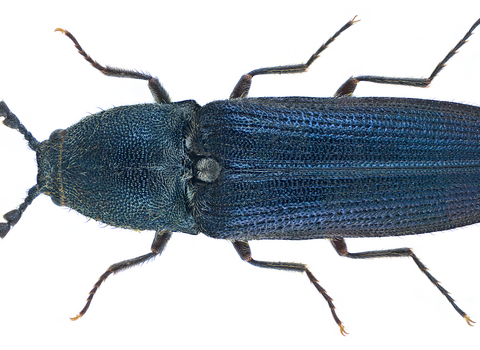
Violet click beetle © Udo Schmidt
Violet click beetle
The violet click beetle is a very rare beetle that lives in decaying wood, particularly common beech and ash. It gets its name from its habit of springing upwards with an audible click if it falls on its back. It is found at just three sites in the UK.
Scientific name
Limoniscus violaceusWhen to see
February to MayTop facts
Category
Stats
Length: 1.2cmProtected in the UK under the Wildlife and Countryside Act, 1981. Priority Species under the UK Post-2010 Biodiversity Framework. Listed as Endangered on the global IUCN Red List of Threatened Species.
